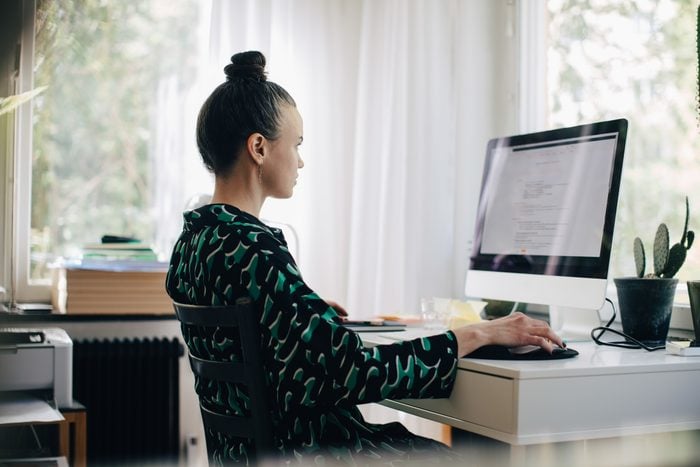
What you need to know about “dead butt” syndrome
Due to Covid-19 stay-at-home orders, many people are spending more time at home, whether they’re working remotely or currently unemployed. Unfortunately, more time at home can lead to sedentary behaviors, such as sitting for long periods of time on the couch or your at-home office chair. Sitting can take a toll on the body, affecting everything from the neck to your legs.
“When we sit for long periods of time some very important elements of our core can become compromised,” says Sue Hitzmann, manual therapist and exercise physiologist and creator of the MELT Method and Melt Performance. Once you do finally stand up, the components of your core muscle group—your trunk—and key elements of your hip joints don’t move as smoothly, and your body compensates by putting stress on areas not designed to handle the demand. (Here are some hip stretches you can try.)
Enter: Dead butt syndrome, clinically known as gluteus medius tendinopathy. The condition, caused by inflammation in the tendons in one of the smaller muscles that make up the buttocks, called the gluteus medius, can also occur in runners who don’t cross train.
This pain can begin with little things like tension or aches in your neck and low back, or you’ll find yourself constantly shifting in your chair to find (in vain) a comfy position. Eventually, the symptoms are more noticeable and frequent. Your hips feel tight and your back will feel stiff. Your joints will snap, crackle, and pop when you move. But the symptoms aren’t just felt on the inside, they’re seen on the outside too, like a swayback posture for starters. (Find out the easy ways you can improve your posture.)
“The easiest and most obvious thing you can do during the workday is to get up more often,” says Hitzmann. If necessary set a timer to remind yourself to get up for a few minutes every hour. Then try these MELT Moves created by Hitzmann; you can do them three times a week for best results.
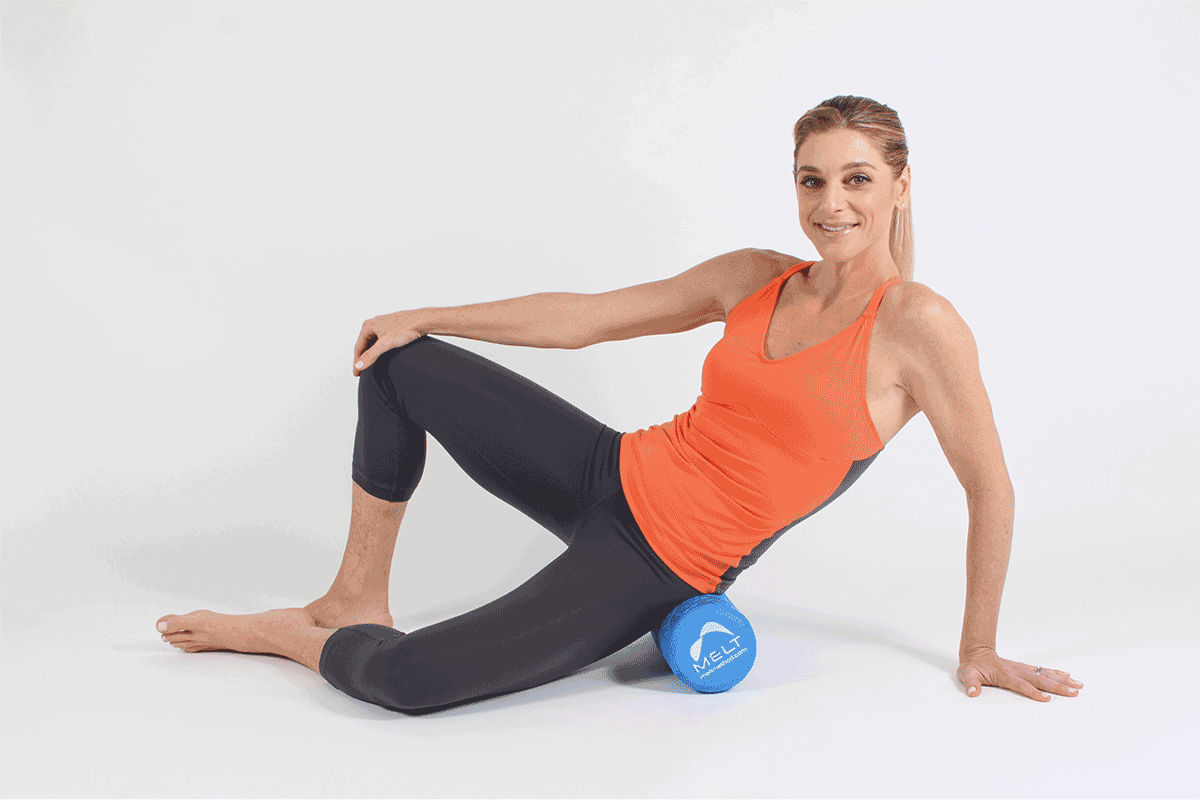
Deep hip glide
First up, the deep hip glide and shear: Sit upright on a MELT Body Roller (or a similar roller you have at home). Place your left hand behind the roller and let your left leg fall to the side; keep your right leg bent with foot flat on the floor. GLIDE: Slowly move your body over the roller to prepare the tissue for the next technique called SHEAR.
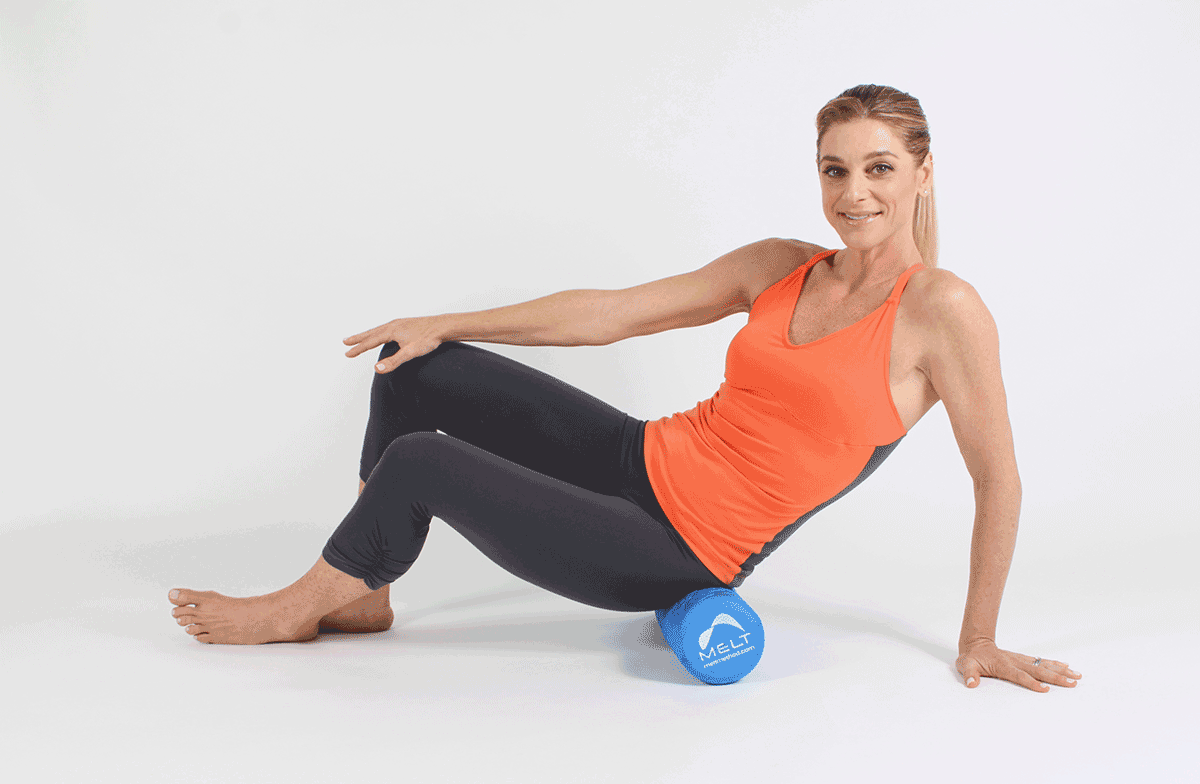
Deep Hip Indirect Shear
If you find a tender spot, what we call a “Barrier”, simply roll up to the barrier rather than landing right on the tender spot. Create an indirect shear by clamming the leg open and closed at the hip joint (bring your left knee up toward the right and then let it fall back again). Or try a direct shear by straightening out your left leg and roll your body left to right; the roller stays still and you move your body slightly over the roller. Once you create the shear, roll onto the tender spot and let it compress. Wait on the spot, take two to three focused breaths right into the area you are compressing, and give the tissue a moment to adapt. Repeat on the other side. Here are more foam roller exercises that your body will thank you for doing.
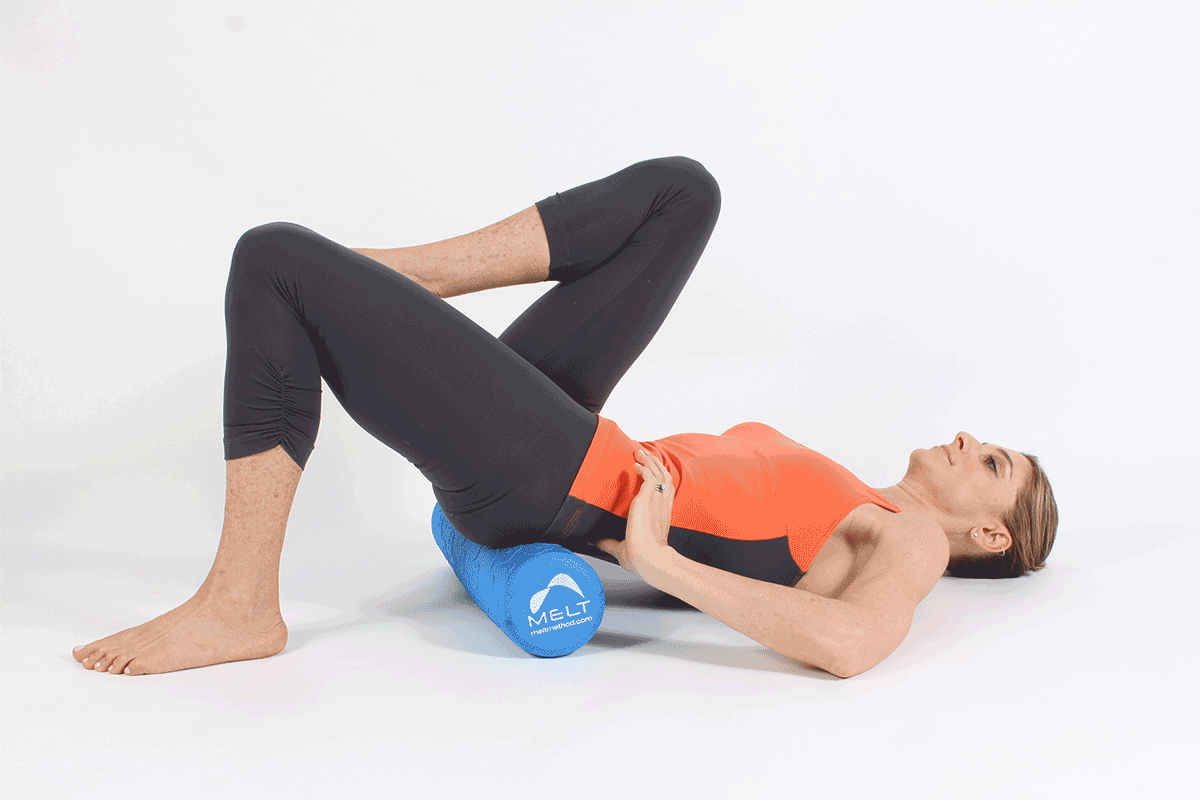
Bent knee press
Lie on your back with the roller under your pelvis so that the majority of your glutes are on the opposite side of the roller from your trunk, and the top of your hips are on your side of the roller—not on the top. Keep your left foot planted firmly on the ground and push your left knee over your toes as you bring your right knee toward your chest; tuck your pelvis downward. This will lengthen the front side of the thigh and spine. Inhale and put a little pressure into the pose; grasp your right knee and gently pull toward your chest as you exhale and repeat the lengthening part by tucking your pelvis. Repeat on the other side. (Check out this 10-minute butt workout this celebrity loves.)
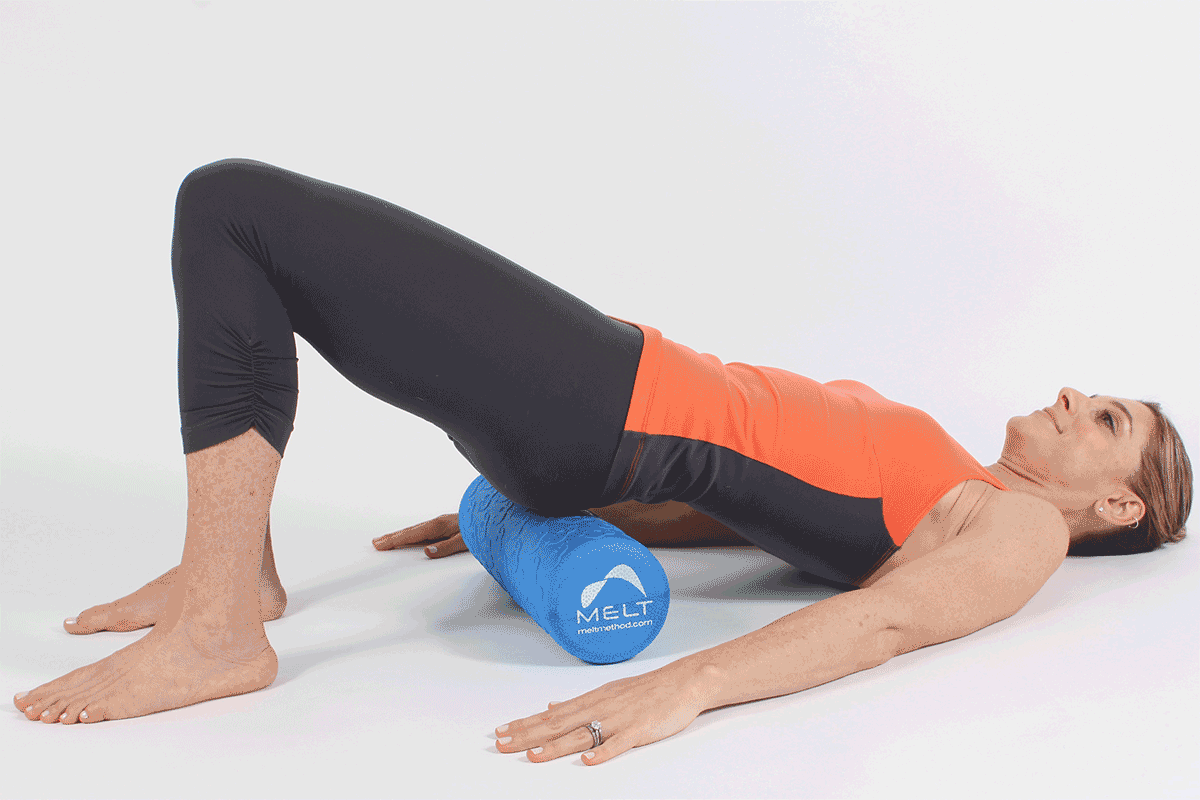
Mini bridge
This move will help prevent your hamstrings and low back muscles from over-compensating: Place your feet hip width apart, knees bent with your hips on the top of the roller; keep your arms flat on the floor just out from your sides for balance. Push into your feet and try to ease the weight of your hips off the roller. Take care not to arch your back. Instead, think about your knees reaching over your toes. Hold this pose for five to ten seconds then slowly return your hips to the top of the roller. Repeat this slow controlled lift four times. Then repeat the pattern four more times without a pause. (Don’t miss these glute exercises that aren’t squats.)
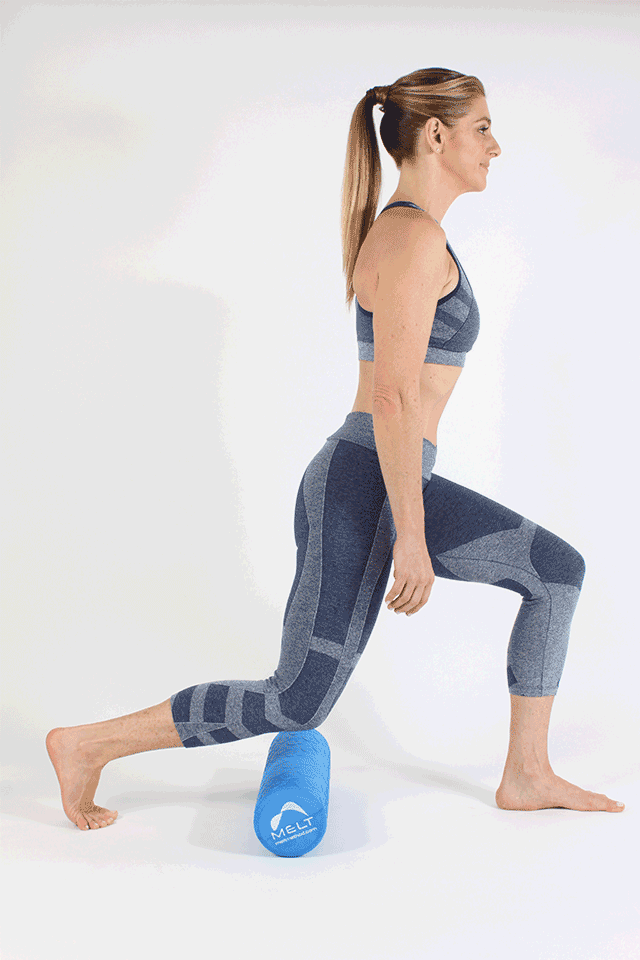
The hover and lunge
This move reverses the traditional lunge to activate the lower part of your glutes and limit the amount of compensation your quadriceps and upper glutes are doing. (Worried about your glutes? Check out the butt exercises you can do at home.)
Stand over the roller, right foot in front, left foot behind. Lower your left leg just below the knee onto the roller with your hips level. Push into your right foot and slowly hover your left shin over the roller—about two to three inches above. Hold this pose for five to ten seconds and slowly return your left shin to the roller and repeat the lift-and-pause four times. Next, repeat the movement four more times without the pause. Repeat on the other side.
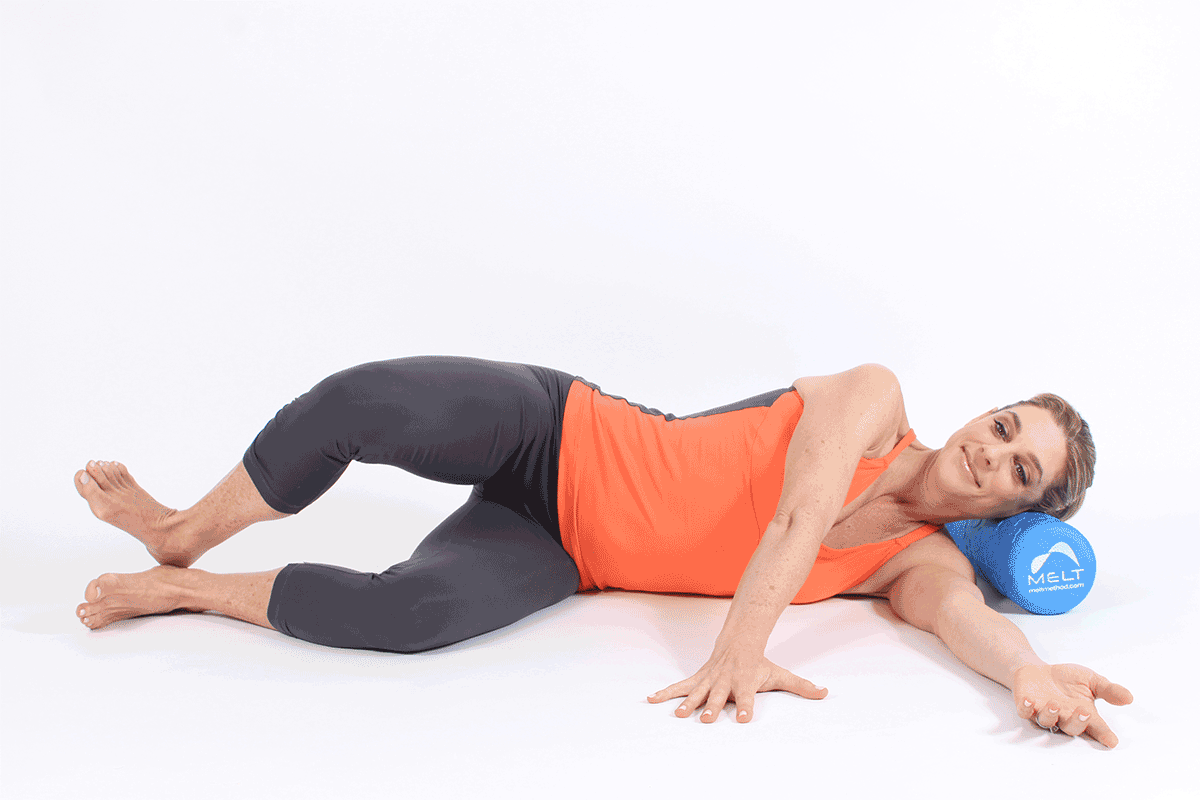
Clams
Lie on your left side with your knees bent and your head resting on the roller; stretch your arms out in front of you, left arm flat, right arm with hand placed flat on the r for balance. With your left foot on the r and your weight on your upper thigh (rather than your hip), roll your right hip forward so that your right knee is slightly in front of your left.
Keep your heels together as you slowly lift your right knee up while keeping your pelvis and torso still; pause. Hold for 30 seconds, then return to the original position. Repeat four times, then switch sides.
